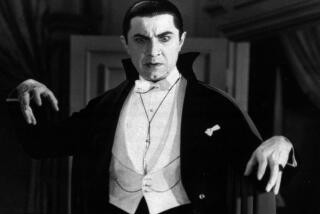The Sunday Conversation: With George A. Romero
With “Survival of the Dead,” horror auteur George A. Romero, 70, resurrects the series that began more than 40 years ago with the game-changing zombie film “Night of the Living Dead.” The Toronto-based writer/director passed through Los Angeles promoting his sixth “… of the Dead” movie, now in theaters.
What inspired you to make No. 6?
I think of it as four and two. The first four were on their own track. Even though they were made 10 years apart from each other or more, it’s meant to be the same storyline. “Night of the Living Dead,” then “Dawn of the Dead” is a few weeks later, “Day of the Dead” months later and “Land of the Dead” is three years later. Each one spoke about a different decade and was stylistically different.
After “Land,” I wanted to do something about emerging media and citizen journalism, so I got this idea for “Diary of the Dead.” I thought it would be a one-off. But because it was so inexpensive to make — it may have gotten close to 3 [million dollars] by the time we were finished — it wound up making a lot of money. It’s still earning. It’s the gift that keeps on giving.
The dead that will not die.
Yeah. I’ve been really lucky. My stuff does particularly well on video. Horror fans have this collector mentality. I don’t know how many versions of “Dawn of the Dead” are out there. “New footage!” I didn’t shoot any new footage, but people buy it anyway.
How do you keep zombies fresh?
With CG, I can do more and be sillier. In “Diary,” there’s a scene where they hit a guy with acid and the camera is never off him, and you see it gradually eat through his skull and get all the way through his brain. That’s fun too. There are a couple of real Looney Tunes and Coyote/Roadrunner moments in this film that I could never have done without CG. I guess I’m a kid in a candy store.
I’ve been able to stick with this genre I’ve loved since I was a kid. I grew up on DC comic books and “Tales From the Crypt,” which were all loaded with humor, bad jokes and puns. I can have that kind of fun and make these comic book movies, but at the same time talk about things I want to talk about — whether it’s consumerism or the Bush administration or war.
I was wondering what you were getting at with “Survival of the Dead.” I definitely saw social media. It also seemed like Hatfields versus McCoys to me.
It is about that. It’s about enmities that don’t die. It’s not necessarily current except to the extent that I think all of North America needs to take an anger management class.
There were zombie films before yours, but …
But different kind of zombies. I made them the neighbors. They used to be Caribbean voodoo stuff.
You added flesh-eating and gore for the sake of gore. What possessed you to do that and what do you think the appeal is?
The old DC comic books were very, very graphic before the old Comics Code cleaned them up. I just don’t shy away from it. Hard-core horror fans would like to see more and more of it. It’s the fun part. It’s the pay off. It’s the downhill dip on the roller coast.
Now I don’t like these torture porn things. It’s the star and there’s nothing else to it. They’re just mean-spirited and Grand Guignol all the way. I don’t find any substance underlying it. I like to use horror as allegory.
Your first film came out in ’68. Did it spring from ‘60s culture?
I think it did. We were all angry that peace and love hadn’t changed the world. There’s a little bit of that disappointment and anger. I think that’s the main reason the French discovered the film. In the U.S., it played drive-ins and neighborhood theaters for about a year and got scathing reviews. Roger Ebert wrote a piece calling it something spawned by the devil. And then it went away and we thought it was gone. Then all of a sudden, Cahiers du Cinema wrote this piece about it as if it was the godhead or something. The whole world changed.
Were you surprised?
Very. I think the reason it got noticed was the fact that we used an African American actor in a role that didn’t need to be played by an African American actor. And then he gets gunned down by this posse. All of that stuff happened to him when [the character] was Caucasian, when we first wrote the script. Duane (Jones) realized much more than we did how much power that added to it. And we finished the film and we were driving it to New York to see if we could get it distributed. And that night, with the first print of “Night of the Living Dead” in the trunk of our car, we heard on the radio that [ Martin Luther] King had been assassinated. So now all of a sudden the power of the film was ratcheted up that much more. But the fact that Duane agreed to play the [lead] role, he was just the best actor from among our friends.
Clicking on Green Links will take you to a third-party e-commerce site. These sites are not operated by the Los Angeles Times. The Times Editorial staff is not involved in any way with Green Links or with these third-party sites.
More to Read
Only good movies
Get the Indie Focus newsletter, Mark Olsen's weekly guide to the world of cinema.
You may occasionally receive promotional content from the Los Angeles Times.










